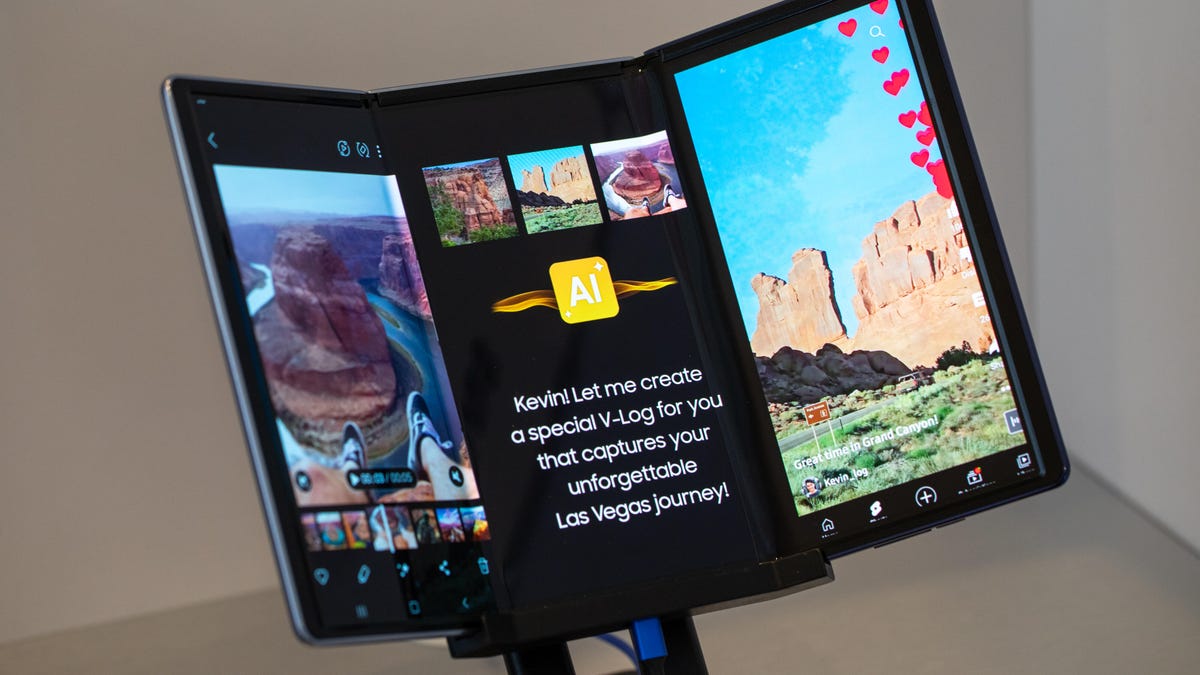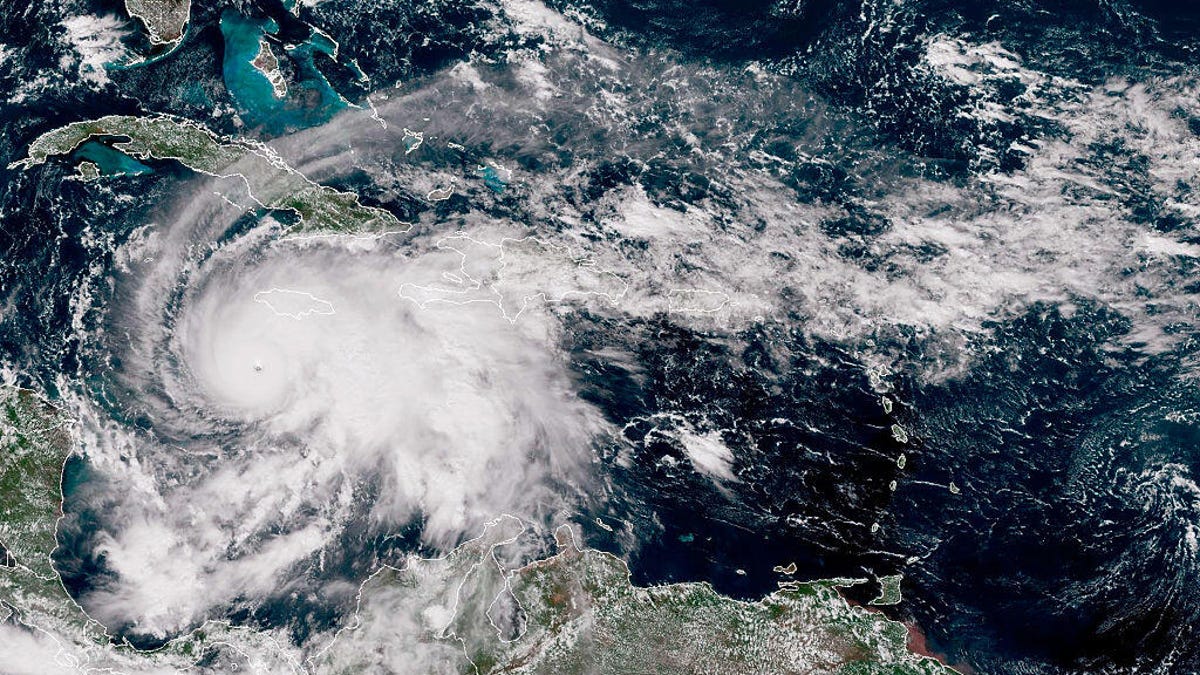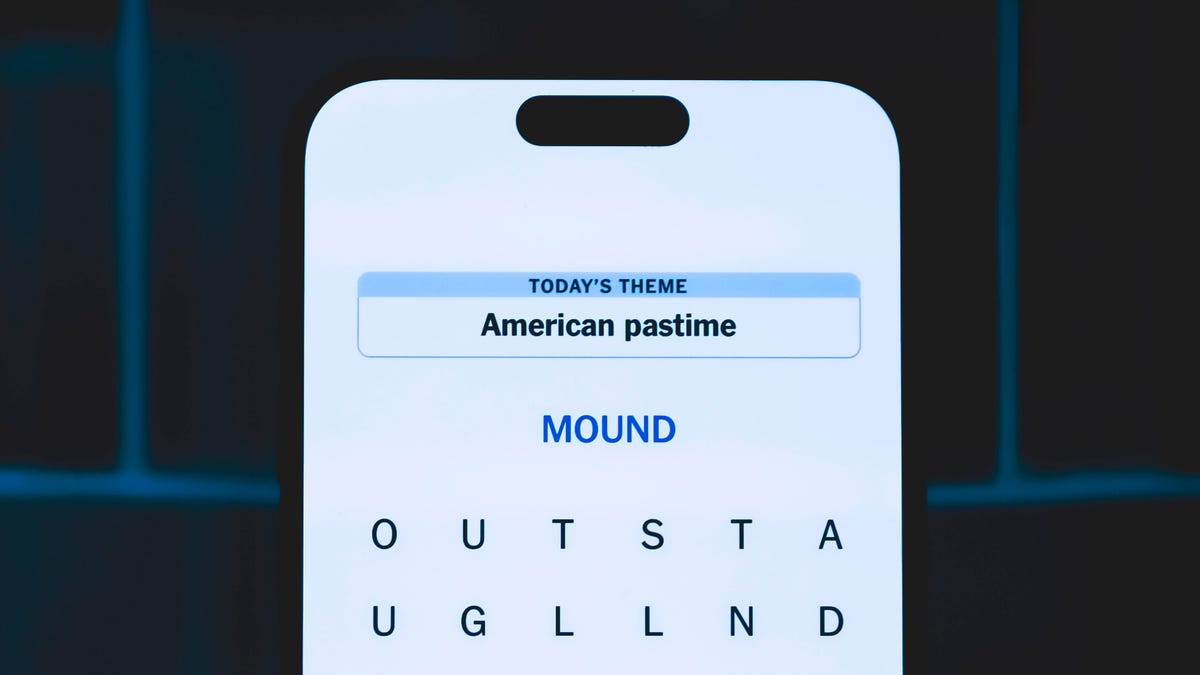Technologies
iPhone 16E vs. iPhone 16: How Apple’s Phones Compare
The $599 iPhone 16E scales back on some features, but shares many similarities with the $799 iPhone 16. Here’s everything to consider.

The $599 iPhone 16E is Apple’s most affordable iPhone, and it shares many features with the $799 iPhone 16. But there are also features you’ll have to sacrifice for that $200 discount.
While some core components like the A18 chip, iOS 18 and Apple Intelligence are on both devices, there are differences across cameras, design and battery.
Here’s how the iPhone 16E compares to the baseline iPhone 16.
Display and build
The iPhone 16E and iPhone 16 both have a 6.1-inch OLED display with a 60Hz refresh rate. The 16E has a peak brightness of 1,200 nits, while the 16 reaches 2,000 nits. A ceramic shield front and glass back are featured on each phone.
The devices have an aluminum design and are about as heavy as each other, with the iPhone 16E weighing in at 167 grams and the iPhone 16 at 170 grams.
Both phones also have an Action button, but only the iPhone 16 has a Camera Control button. The Dynamic Island feature is also limited to the pricier model. The devices each have an IP68 rating for dust and water resistance.
Apple drops the home button on its new budget phone in favor of Face ID, just like the iPhone 16. Both devices also have a USB-C port, and neither has a headphone jack.
The iPhone 16E comes in black and white, while the iPhone 16 comes in black, white, pink, teal and ultramarine.
Battery and storage
Both the iPhone 16E and 16 come in 128GB, 256GB and 512GB options. Apple boasts that the 16E can get up to 26 hours of video playback and 21 hours of streamed video playback, while the 16 will last for up to 22 hours of video playback and 18 hours of streamed video playback.
One of the reasons behind the cheaper iPhone’s longer battery life is because it runs on Apple’s very first 5G modem, called C1. The company says its C1 modem is the «most power-efficient modem ever in an iPhone» and as a result helps increase the phone’s battery life.
They each support 20-watt wired charging. The iPhone 16E supports 7.5W Qi wireless charging, while the iPhone 16 is capable of 15W Qi2 charging, as well as MagSafe wireless charging up to 25W with a 30W adapter or higher.
Cameras at a glance
You’ll find a 48-megapixel wide camera on both the iPhone 16E and iPhone 16, as well as a 12-megapixel ultrawide camera on the 16. To make up for its lower camera count, the 16E uses sensor cropping to get a 2x magnification for better zoomed-in shots (as does the iPhone 16). Both phones have a 12-megapixel front-facing camera.
You can shoot 4K video at 60 frames per second on each device. On the iPhone 16, you can shoot 1080p spatial video, but only at 30 frames per second.
Apple Intelligence for all
One of the biggest upgrades to Apple’s lower-priced iPhone is the inclusion of Apple Intelligence, which was previously confined to iPhone 15 Pro models and the iPhone 16 lineup. Now you can spend less and still get access to features like a smarter Siri, writing tools and the Clean Up tool in photos.
This move signals Apple’s eagerness to get its AI suite into more people’s hands, and indicates that AI is now a core component of any iPhone, from the cheapest option to the most premium.
Check out the spec chart below for more details on each phone.
Apple iPhone 16E vs. iPhone 16
| Apple iPhone 16E | Apple iPhone 16 | |
|---|---|---|
| Display size, tech, resolution, refresh rate | 6.1-inch Super Retina XDR OLED display; 2,532×1,170 pixels; 60Hz refresh rate | 6.1-inch OLED Super Retina XDR display; 2,556×1,179 pixels; 60Hz refresh rate |
| Pixel density | 460ppi | 460ppi |
| Dimensions (inches) | 5.78×2.82×0.31 | 5.81×2.82×0.31 |
| Dimensions (millimeters) | 146.7×71.5×7.8 | 147.6×71.6×7.8 |
| Weight | 167 grams (5.88 ounces) | 170 grams (6 ounces) |
| Mobile software | iOS 18 | iOS 18 |
| Camera | 48 megapixel (wide) | 48 megapixel (wide), 12 megapixel (ultrawide) |
| Front-facing camera | 12 megapixel | 12 megapixel |
| Video capture | 4K at 60fps | 4K at 60fps; spatial video at 1080p at 30fps |
| Processor | A18 | A18 |
| RAM/storage | 128GB, 256GB, 512GB | 128GB, 256GB, 512GB |
| Expandable storage | No | No |
| Battery | Up to 26 hours video playback, 21 hours streamed video playback, 90 hours of audio playback. 20-watt wired charging, 7.5-watt Qi wireless charging | Up to 22 hours video playback; up to 18 hours video playback (streamed). 20-watt wired charging. MagSafe wireless charging up to 25 watts with 30-watt adapter or higher; Qi2 up to 15 watts |
| Fingerprint sensor | None (Face ID) | None (Face ID) |
| Connector | USB-C | USB-C |
| Headphone jack | No | No |
| Special features | Action button, Apple C1 5G modem, Apple Intelligence, Ceramic Shield, Emergency SOS, satellite connectivity, IP68 resistance. Colors: black and white. | Apple Intelligence, Action button, Camera Control button, Dynamic Island, 1 to 2,000 nits display brightness range, IP68 resistance, Ceramic Shield. Colors: black, white, pink, teal, ultramarine. |
| US price starts at | $599 (128GB), $699 (256GB), $899 (512GB) | $799 (128GB), $899 (256GB), $1,099 (512GB) |
| UK price starts at | £599 (128GB), £699 (256GB), £899 (512GB) | £799 (128GB), £899 (256GB), £1,099 (512GB) |
| Australia price starts at | AU$999 (128GB), AU$1,199 (256GB), AU$1,549 (512GB) | AU$1,399 (128GB), AU$1,599 (256GB), AU$1,949 (512GB) |
Technologies
Samsung’s Wild-Looking Tri-Fold Phone Debuts at APEC Summit in South Korea
The Galaxy phonemaker showed off a twin-hinged foldable at a Korean consumer tech show.

Samsung unveiled its first triple-display foldable phone for consumers at a tech exhibition hall during the APEC CEO Summit in South Korea. The Korean publication Dailian reported that the new phone will launch in November or December.
The tri-fold phone, which doesn’t have an official name yet, was revealed as a prototype on display. Whereas the Galaxy Z Fold 7 and Galaxy Z Flip 7 fold in half along one hinge, Samsung’s next device folds in two places to be as compact as a typical smartphone with a 6.5-inch outer screen, then unfolds for a tablet-size 10-inch screen, according to The Chosun Daily. Compare that with dual-screen foldables that have inner screens measuring approximately 8 inches. The Z Fold 7 has a single crease on its main screen; the new tri-fold could have two creases.
Samsung has been at the forefront of foldable phones since releasing the first Galaxy Fold in 2019 and the Galaxy Z Flip in 2020. At the time, it faced fierce competition from Motorola and Huawei — the latter of which gained a significant lead in 2024 with its own tri-fold Huawei Mate XT, which was followed by a second version. Samsung’s launch of its own competitor keeps the company in the game.
Here’s your first look at the Samsung Galaxy Z TriFold.
Screen when folded: 6.5-inch
Screen when unfolded: 10-inch
It might be announced later this week.
Source: Chosun Media pic.twitter.com/EhT4i1hW2k— Trakin Tech English (@trakinenglish) October 28, 2025
These two consumer tri-folds have their differences. The Huawei Mate XT’s two hinges fold in opposite directions like an accordion, giving it a Z shape, while Samsung’s device has two screens that fold inward in what Dailian (through Google Translate) asserts is «G-shaped.» Given that Samsung has branded its foldable line as the Z-series, it’s ironic that the company didn’t adopt that shape and format for its tri-fold.
Samsung didn’t release any more details about its tri-fold, though Dailian expects it to be even pricier than the Galaxy Z Fold 7, which starts at $2,000in the US. From photos of the device — apparently a prototype — behind glass, you can see a front-facing camera on the inner display (when unfolded) and outer screen (when folded up). But since Samsung also didn’t show the device folding, there are a lot of questions about its durability and capability before its supposed launch in a month or two.
It’s not a total surprise to see Samsung’s tri-fold ready to go. For years, the company has displayed various flexible display designs, including three-screen formats, during CES. In the last few months, there’s been a steady flow of rumors and outright executive confirmations that Samsung was gearing up to unveil its tri-fold. Now we’ll have to see whether the company that’s fought so hard to be at the forefront of smartphone design can release another format that dominates the folding phone niche — all before one of its biggest rivals, Apple, even releases its first foldable.
Samsung didn’t respond to a request for comment.
Technologies
Be Wary of AI Videos as Hurricane Melissa Hits Jamaica. How to Spot a Fake
AI-generated storm videos are spreading rapidly online. Here’s where to find reliable information.

As Category 5 Hurricane Melissa bears down on Jamaica with winds topping 180 mph, social media is being hit by a surge of AI-generated and misleading videos, showing catastrophic flooding, collapsing buildings and rescue scenes that never happened.
Across X, TikTok, Instagram, WhatsApp and other social media platforms, fake clips spread quickly, racking up millions of views in hours. Many of these videos are spliced footage from past storms or clips created entirely with text-to-video AI tools.
In times of crisis, like a dangerous and imminent natural disaster, these fake videos can create confusion, panic and distraction at a time when accuracy can be life-saving.
Natural disasters have always bred rumors and recycled footage, but the rise of AI-generated video has supercharged the problem. Tools like OpenAI’s Sora and other AI-video platforms can render realistic-looking images of storms, floods and damage scenes in seconds, reaching millions online in just a few hours.
Read also: The Deepfakes Are Winning. How Can You Tell if a Video Is Real or Sora AI?
Don’t miss any of our unbiased tech content and lab-based reviews. Add CNET as a preferred Google source.
Why storms are a magnet for fake news
Storms are visual, emotional and fast-moving, which is the perfect recipe for viral misinformation. In years past, videos were often taken out of context or labeled as a different storm. Now, they can be digitally fabricated from scratch.
Some depict apocalyptic flooding that hasn’t occurred, while others claim to show «real-time» conditions hours before landfall. Several videos that have circled this week include images of sharks swimming in the storm surge and unsettling depictions of human suffering.
False videos like these can exaggerate the danger of the storm, create panic, undermine trust and distract emergency responders, as misinformation pulls attention from verified reports.
The following three videos are all fake. They are labeled (albeit briefly) with the Sora watermark, which indicates they were made in OpenAI’s video generator.
How to separate truth from fiction online
When social feeds fill with dramatic hurricane clips, it’s important to separate truth from fiction.
«You have to be very discerning,» Senator Dana Morris Dixon, Jamaica’s information minister, said. «You have to know what is good information from bad information. If you want to know where the storm is going, if you want to know what to do, you need to look for official sources.»
Dixon highlighted that the Jamaica Information Service, Office of Disaster Preparedness and Emergency Management’s information sites and the Office of the Prime Minister page are resources for legitimate, timely updates.
Here are some ways to be discerning.
Check the source. If the video comes from an unfamiliar account, lacks a timestamp or carries no recognizable media branding, assume it is fake until verified. Also, look for the Sora watermark indicating it was made in OpenAI’s app, or read the comments to see if someone else has flagged the video as fake.
Ask yourself if it’s new and local. Does the geography match Jamaica? Is the footage recent? Many «Melissa» clips could actually be from past Caribbean or Gulf storms.
Cross-check before believing. Confirm through trusted outlets, like the Meteorological Service of Jamaica and the US National Hurricane Center, or established media like the BBC, Reuters or the Associated Press.
Pause before sharing. A viral video can cause harm if it spreads misinformation. Wait until a credible source verifies it before reposting.
Go local. If you’re in the affected area, rely on local emergency agencies, radio stations and city or county-level officials for evacuation and safety updates.
Monitor official alerts. For real-time instructions, stick with government channels and local emergency feeds. Your safety depends on accurate information, not viral content.
As AI-generated media becomes easier to produce, hurricanes like Melissa offer a preview of a new reality: one in which you can’t trust much of the information you see online.
Staying safe means being skeptical and diligent when looking for accurate and even lifesaving news.
Read also: What Is AI Slop? Everything to Know About the Terrible Content Taking Over the Internet
Technologies
Today’s NYT Strands Hints, Answers and Help for Oct. 29 #605
Here are hints and answers for the NYT Strands puzzle for Oct. 29, No. 605.

Looking for the most recent Strands answer? Click here for our daily Strands hints, as well as our daily answers and hints for The New York Times Mini Crossword, Wordle, Connections and Connections: Sports Edition puzzles.
Today’s NYT Strands puzzle is a fun one for English majors. Some of the answers are a bit tough to unscramble, so if you need hints and answers, read on.
I go into depth about the rules for Strands in this story.
If you’re looking for today’s Wordle, Connections and Mini Crossword answers, you can visit CNET’s NYT puzzle hints page.
Read more: NYT Connections Turns 1: These Are the 5 Toughest Puzzles So Far
Hint for today’s Strands puzzle
Today’s Strands theme is: «Nevermore!»
If that doesn’t help you, here’s a clue: Poem by Edgar Allen Poe.
Clue words to unlock in-game hints
Your goal is to find hidden words that fit the puzzle’s theme. If you’re stuck, find any words you can. Every time you find three words of four letters or more, Strands will reveal one of the theme words. These are the words I used to get those hints but any words of four or more letters that you find will work:
- MOVE, RAVE, NOVEL, BACK, LACK, HACK, FEAT, HEAT, WING, SORE, ROSE, STAR, RATS
Answers for today’s Strands puzzle
These are the answers that tie into the theme. The goal of the puzzle is to find them all, including the spangram, a theme word that reaches from one side of the puzzle to the other. When you have all of them (I originally thought there were always eight but learned that the number can vary), every letter on the board will be used. Here are the nonspangram answers:
- BLACK, CLEVER, WINGED, FEATHERED, OMNIVOROUS
Today’s Strands spangram
Today’s Strands spangram is THATSSORAVEN. To find it, look for the T that’s six letters down on the far-left vertical row, and wind across.
-

 Technologies3 года ago
Technologies3 года agoTech Companies Need to Be Held Accountable for Security, Experts Say
-

 Technologies3 года ago
Technologies3 года agoBest Handheld Game Console in 2023
-

 Technologies3 года ago
Technologies3 года agoTighten Up Your VR Game With the Best Head Straps for Quest 2
-

 Technologies4 года ago
Technologies4 года agoVerum, Wickr and Threema: next generation secured messengers
-

 Technologies4 года ago
Technologies4 года agoBlack Friday 2021: The best deals on TVs, headphones, kitchenware, and more
-

 Technologies4 года ago
Technologies4 года agoGoogle to require vaccinations as Silicon Valley rethinks return-to-office policies
-

 Technologies4 года ago
Technologies4 года agoOlivia Harlan Dekker for Verum Messenger
-

 Technologies4 года ago
Technologies4 года agoiPhone 13 event: How to watch Apple’s big announcement tomorrow
